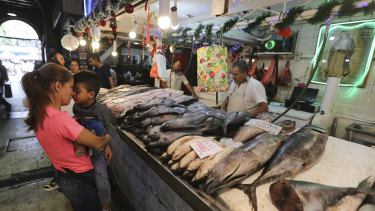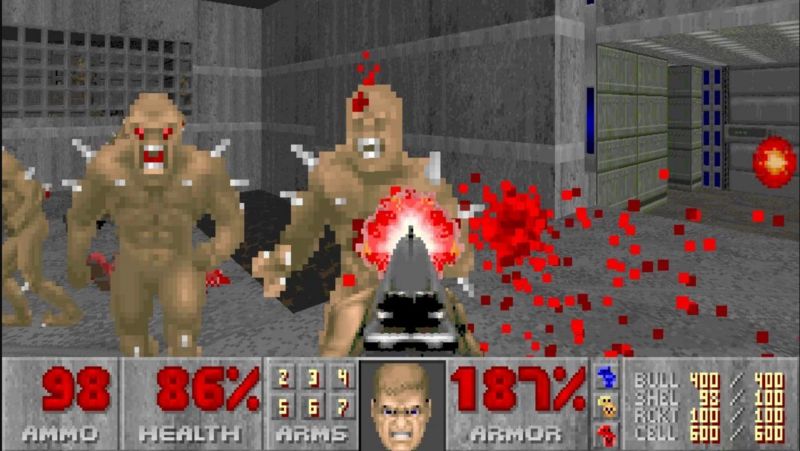Protests have rocked Chile, the world's top copper producer, for two months, leaving 26 dead and causing billions in losses for private businesses and public infrastructure. Demonstrations and sometimes violent riots and looting prompted the central bank in December to slash forecasts for growth, investment and demand through 2020.

A shopper holds her son as she buys fish at the Central Market, the main market of Santiago, Chile, on Thursday.CREDIT:AP
The IMACEC economic activity index reported on Thursday encompasses about 90 per cent of the economy that gross domestic product covers.
Finance Minister Ignacio Briones said the bad news was largely expected, but bode poorly for the coming months.
"The October and November IMACECs are among the worst since the sub-prime crisis," Briones said. "In 2020 we expect to have a year of low growth."
Mining activity measured in GDP terms plunged 5.1 per cent in November, the bank said, dragging overall growth downwards and marking an early sign that the protests may have had a knock-on effect on the main economic driver.

Anti-government demonstrators throw rocks at a police water canon trying to disperse them in Santiago, Chile, last week.CREDIT:AP
Chile's vast copper mines - the country produces nearly a third of the world's copper - had largely maintained production and operated normally through early November at the height of the unrest, though some mining companies had warned that protests, strikes and road blockades were taking a toll.
Non-mining activity also fell 3.1 per cent, the central bank said, led by a fall in both commerce and the services. The bank highlighted sharp declines in transportation and tourism.
Much of the capital Santiago, with a population of 6 million, was shut for a period near the end of October as riots and looting closed streets, central squares and many small businesses, hotels and restaurants.
Despite dire predictions, unemployment through November fell slightly, the government said earlier this week.
Analysts and economists have said since that an increase in job losses would likely be felt in subsequent months, as unemployment lags behind falling economic growth.
Chile's finance minister said in mid-November that as many as 300,000 jobs could be lost as a result of the protests.
He told reporters he hesitated to make further predictions, but said he was "worried" about the impact of slumping economic growth on unemployment.
"It's not yet been reflected in the data...and hopefully, it won't be," he said. "But we have to pay extremely close attention."
But Bloomberg reported the country's foreign reputation for sound fiscal management has survived the protests largely intact and the government now intends to cash in on that credibility.
As Andres Perez, head of international finance at Chile's Finance Ministry, visited institutional investors in Asia and the US in December to explain the social crisis and remind them of Chile's financial strengths, he was struck by the high expectations the country has created.
There's a consensus that Chile's fiscal and monetary response has been "effective, fast and decisive in terms of its size," Perez said in an interview in Santiago. "Then again, they say that this is what they expect of Chile."
Reuters, Bloomberg
---30---







